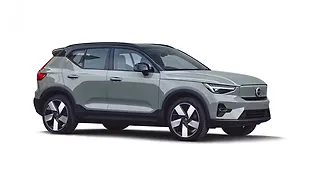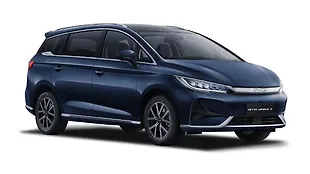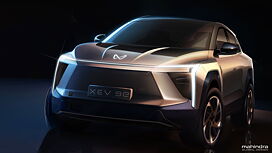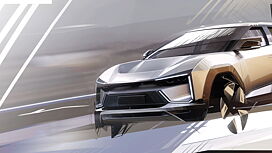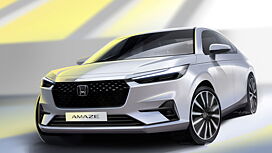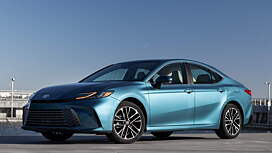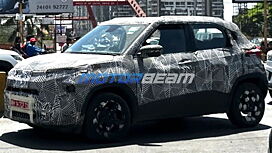Introduction

Say hello to the new Creta, which Hyundai India assures us is not a compact crossover. Instead, it’s being officially classified as an ‘SUV for the new generation’. However, once you peel away all the marketing gibberish, you will find the Creta as a quintessential compact crossover designed to carry and wave Hyundai’s flag in a looming war among several global manufacturers to draw in Indian buyers towards this ever-growing breed of vehicles.
To say that compact crossovers are becoming increasingly important in the Indian car market would be an understatement – props to Renault India for spearheading the breed way before anyone else with the brilliantly packaged Duster. Following manufacturers Ford and Nissan, too, have left their mark with cars like the EcoSport and Terrano respectively. And now, it is Hyundai’s turn to have a go in this segment with the Creta which finds itself in a rather sweet spot that ends up making it more appealing than the rest of the lot.
Design

If there ever was an award to be given for the most improved manufacturer in terms of car design, I would wholeheartedly nominate Hyundai for it. To come up with aesthetically pleasing cars like the latest generation Elantra and the i20 after something as terrible as a Verna Transform, undoubtedly, demands a round of applause from all of us.
Hyundai, in fact, has been making surprisingly good looking cars off late and the Creta is no exception. Essentially a rebadged version of the ix25 sold in China, the Creta utilises Hyundai’s Fluidic Sculpture 2.0 design language to draw eyeballs. Upfront it portrays a strong road presence thanks to the triple slat chrome grille and the smoothly creased hood. If anything, the Creta looks quite burly and lends a bit of aggression from its massive front bumper design and LED-infested sweptback headlights.

However, move on to the sides and its apparent that Hyundai has tried hard to achieve that sporty SUV-esque stance – perhaps a bit too hard, if you ask me. The fusion of the rising beltline from the front wing with sloping roofline along with a few character lines is probably something not everyone would appreciate. That being said, the plastic cladding treatment and the diamond-cut 17-inch alloys on the top-spec models make the side profile rugged and yet stylish at the same time.
The rear profile impresses just as much as the front. Despite its Asian genes, the Creta looks like a proper European crossover when viewed from the rear, all thanks to the horizontally stacked taillights and the stylish tailgate. All in all that rear-end design is slightly reminiscent of the Kia Sportage though do let in your thoughts in the comments section if you beg to differ.
Interiors & features

Again, if I were to nominate a manufacturer who puts in the highest quality bits into budget car cabins, it would have to be Hyundai. Fun fact: my earlier car – a base-spec 2005 Accent GLE felt better put together compared to more number of today’s budget sedans than I’d like to admit.
It’s hardly a surprise, then, the Creta’s greatest strength perhaps is the quality of the interior and the amount of features on board; it offers more bang for your buck than a top-spec Renault Duster fitted with all the imaginable aftermarket options from your local car accessories shop. And thanks to Hyundai’s multi-spec philosophy, the Creta is being offered in up to 10 variants and caters to a variety of buyers.

A quick glance at the interior shows us what we exactly like about the insides of modern Hyundais. The design and layout of materials is contemporary and carries an air of quality to it although surprisingly, the Creta boasts of a fairly simple layout for the dashboard which makes it all the more easier to get accustomed to all the bits and bobs. Otherwise, the cabin is suitably premium with good quality bits all round and I particularly liked the tactile feel of some of the buttons and knobs that lend a good sense of responsiveness. As for functionality, the front seats are well cushioned as well as adequately big and it’s easy to get comfortable behind the wheel. The rear, though not as generously spacious as one would expect, is good enough for two grownups but adding a third occupant is bit of a squeeze. In comparison, the Duster or the Terrano will fare much better for those three in the rear.

Being a Hyundai, the Creta is filled with features to the brim. There’s everything one would expect from a car of this price range. In the top-spec SX(O) variant, there’s full-leather upholstery, 60:40 split rear seat, climate control, electrically foldable ORVMs, rear armrest, six airbags, ABS and ESP. While we have come to expect all these features in modern cars, the Creta also offers automatic headlamps, push-button start, steering mounted controls and a rear view camera as standard. As for entertainment, Hyundai is offering a 7-inch infotainment system with navigation facility and a 6 speaker audio system with Bluetooth and 1GB of onboard memory.
The Creta then is a well-packed compact crossover, one that comes with Hyundai’s usual fare of creature comforts, but if outright space is your top priority you may have to look elsewhere.
Performance, ride & handling

Given that it’s being placed onto a very crucial space in the market, the Creta had to impress by virtue of its powertrain options and Hyundai certainly hasn’t left us disappointed. On offer here are three engine options from the Verna – 1.6-litre VTVT petrol, 1.4-litre CRDi diesel and 1.6-litre CRDi VGT diesel. While all the engines power the front wheels via a 6-speed manual gearbox, the top-end diesel also gets an optional 6-speed auto box from the Elantra. As for numbers, the petrol engine is rated at 121bhp and 151Nm of torque while the 1.4 diesel engine is good for 89bhp and 220Nm. Meanwhile, the most potent 1.6 litre CRDi diesel puts out class leading 125bhp of power and 260Nm of torque.
Get the Creta in motion and the considerable power advantage over the competition is quite clear. The 1.6 diesel model especially is quite potent. Sure, it doesn’t snap your neck but with zero to 100kmph coming up in around 11 seconds, the Creta can easily keep up with cars costing as much. And the way it goes about its business is reasonably smooth compared to say a Duster or a Terrano. More importantly, the Hyundai is enjoyable to drive despite a hint of turbo lag, but once you get past that, the engine delivers as much twist as bigger engined cars and you can really feel it. Sadly, the 6-speed manual gearbox doesn't leave as good an impression as the gear shifts feel quite rubbery despite the light shift action.
No matter how good its cars are in a straight line, finding that perfect balance between ride and handling has always been Hyundai’s Achilles heel. Though things have improved with cars like the Grand i10 and the new Elantra, Hyundai isn’t known for making particularly sporty cars – something that is evident the movement you show the Creta some corners. Be it long corners or sharp switchbacks, the Creta takes a while to react to steering inputs owing to the fair amount of body roll. An EcoSport or a Duster would fare relatively better over the same set of roads and in similar conditions.
The Creta may not be the sportiest to drive but it is certainly among the most comfortable cars in its class. While the low speed ride is expectedly comfortable with little in terms of vertical movements, the Creta is surprisingly stable when the going gets quicker and maintains composure even across moderately undulated roads.

Verdict

From a practical standpoint, this new breed of compact crossovers has accomplished a lot and the Creta is probably the finest of its kind. But with prices starting at Rs 8.59 lakh for the entry-level petrol variant, scaling all the way up to Rs 13.60 lakh for the top-spec diesel, the Hyundai is the most expensive option in its class, with only the all-wheel drive, top-spec Duster coming close at Rs 13.5 lakh.
The Creta then is a pricey affair although it’s also the one with most amount of power, high quality bits and the feel good factor that is somehow missing in the competition. It seems Hyundai is trying to establish itself as a tier one brand at the affordable end of the market and the Creta arguably is a leap in the right direction.

![Hyundai Creta [2017-2018] Image Hyundai Creta [2017-2018] Image](https://imgd.aeplcdn.com/272x153/cw/ec/19382/Hyundai-Creta-Right-Front-Three-Quarter-118797.jpg?wm=0&q=80)











